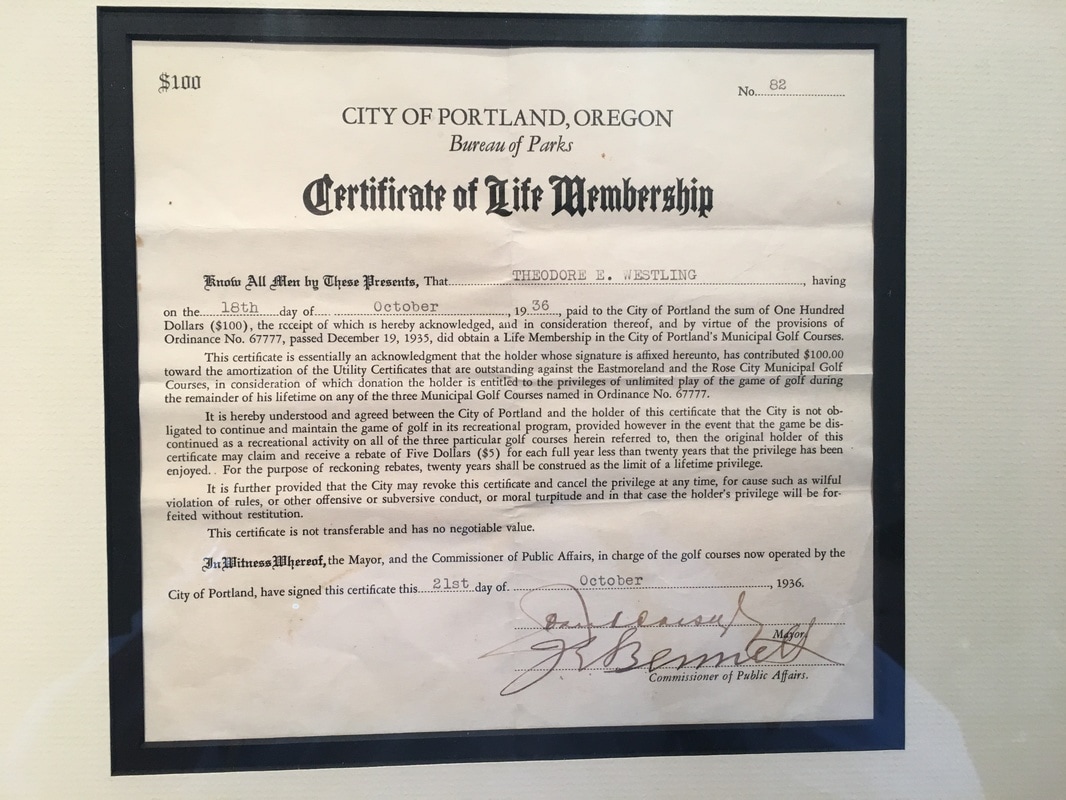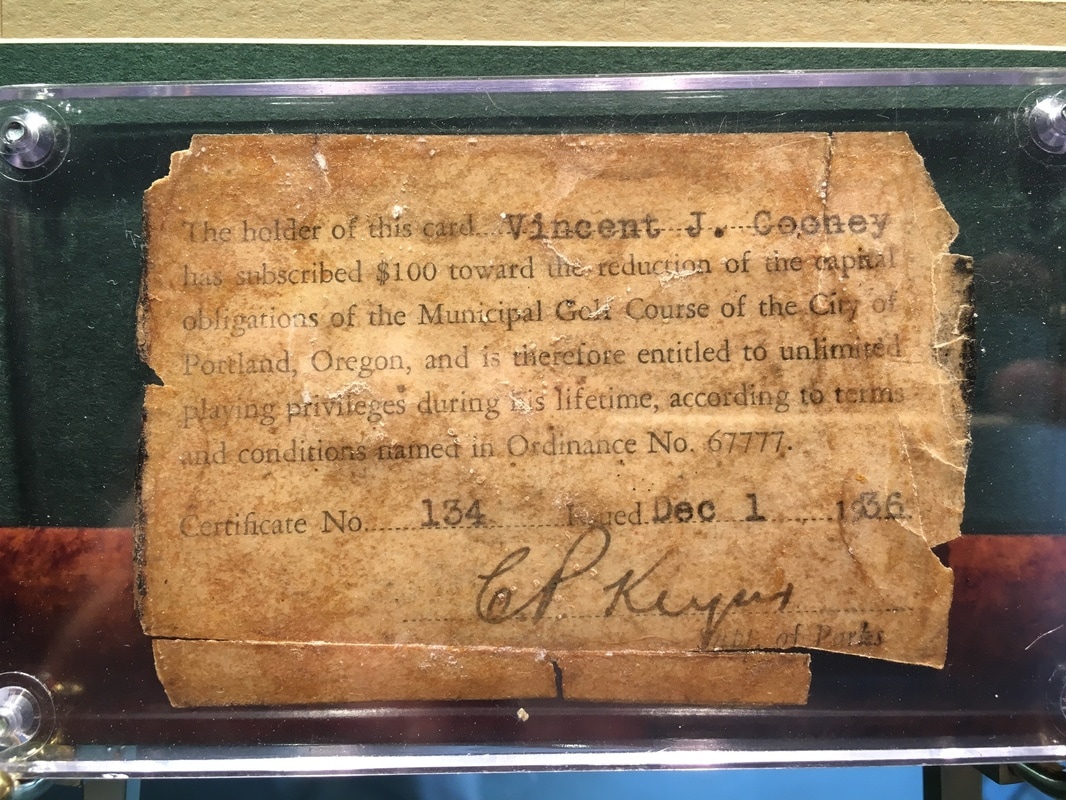|
Portland Parks and Recreation recently unveiled a Player's card, entitling the holder to unlimited golf during specific days and times for one year, based of one of the most successful collaborations between the PPR and the patrons of public golf in the height of the great depression in 1937. Let's trace a little bit of history in this blog article, with the hope we discover and understand more on our Journey. The 1930's proved a challenging time for Portland, as any other city, as it wrestled with economic collapse following the bubble of the Roaring 1020's. As I've mentioned earlier as early as 1932, Portland marketed it's golf courses, which grew to number as many as 40+ in Portland alone - with Eastmoreland as the estuary, up sprung Rose City and the West Hills Par 3 (site of the current Oregon Zoo), along with the private clubs of Alderwood, Columbia Edgewater, Riverside and Oregon Country Club the now defunct M.A.C. Golf Club. Plus there was a new crop of privately owned public courses including Broadmoor, Colwood, Glendevere, Llyod Golf Course, and countless par-3's and driving ranges. Portland was a golf town more than any other with access and availability to all it's citizens. In the 1932 "Golf City, U.S.A." pamphlet sponsored by the City Council, you'll discover the secret to what makes Portland such a special place "It is a wise city that cares for the recreation of its people, as well as the development of its industrial areas. Portland is a very beautiful city. Its gardens, lawns, flowers, shrubbery and roses are famous the world over, but it is also famous for the opportunities it has provided for recreation, especially for golf." |
|


 RSS Feed
RSS Feed